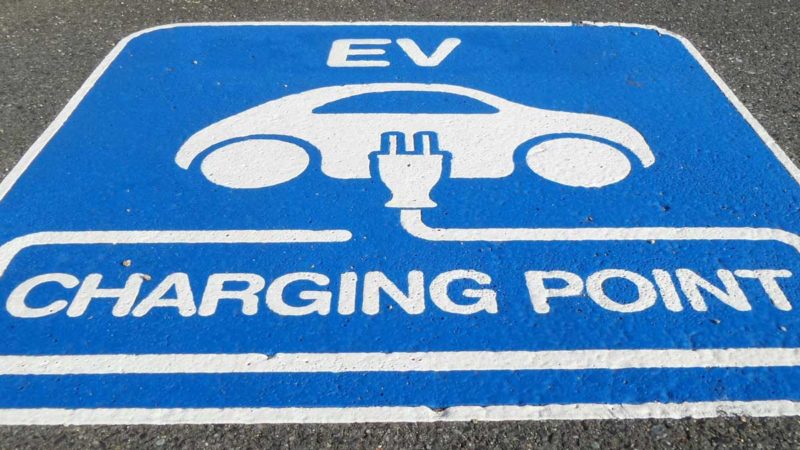When it comes to Electric Vehicles (EVs), the general public has a long way to go in understanding EVs as well as they do ICE (Internal Combustion Engine) vehicles. So how do you ensure that community input to a review of government EV policy is both well informed and practical?
In a unique experiment – Infrastructure Victoria recently commissioned the state’s largest ever deliberative engagement program to ask Victorians what they wanted when it came to supporting the EV transition.
The report and recommendations were released today (Thursday April 8th) and the process, as well as the report and recommendations, make interesting reading.
Luckily for readers of TheDriven, I was one of those chosen to be part of the experiment. With the public release of the report I am now able to report back on the event.
So first up: what is deliberative engagement? As described in the new Victorian Local Government Act – deliberative engagement is a tool used to support democracy and provide elected representatives with well-informed advice on complex issues.
In this case, Infrastructure Victoria commissioned an outside body (Capire Consulting) to recruit a Community Panel – which eventually resulted in 211 Victorians being selected from the pool who replied through an EOI process.
The panel was chosen to represent the state’s mix of age groups, postcodes, genders, incomes and housing types.
Over a five week program of online workshops, EV educative webinars and engagement activities, the Community Panel members were asked to consider, and then answer, the question “How should the Victorian Government support more people to adopt low or zero-emissions vehicles sooner?”
The reason Infrastructure Victoria were asking the question is that while most of Victoria’s CO2-e emissions are decreasing year-on-year, those from Victoria’s transport sector are going the other way!
As a result –Infrastructure Victoria concluded that the state could not meet its long-term emissions targets unless Victorians move to buying EVs faster than they are currently doing.
As Infrastructure Victoria Chief Executive Michel Masson put it: “Victoria will not reach its emissions reduction targets unless more people shift away from petrol and diesel vehicles, but this transition needs to be planned, fair and equitable.”
Panel members were asked to participate in a variety of online ways – including webinars, workshops, surveys, chat rooms and small group sessions to build their knowledge and discuss different views and ideas with each other, before voting on the final recommendations.
As one of the lucky ones to be selected – I for one found it provided a fascinating insight into just high far EV interest (if not knowledge) has spread through the community –as well as gaining some insight into how the educative process of the Community Panel could be moved into a broader community setting.
The Community Panel ultimately decided that any recommendation receiving more than 70% approval through the voting process would be included in the final report. Twenty-one recommendations eventually passed this test.
The full list can be found on the Infrastructure Victoria website, but the general thrust of them was, surprise surprise, that the panel wanted far more positive government intervention to support the EV transition than is currently the case!
The Community Panel also agreed the transition must be supported in a way that was equitable and inclusive in order to not disadvantage any Victorians.
A sample of these recommendations include:
- Deliver a broad community awareness and education campaign;
- End the sale of new internal combustion engine vehicles by 2030 – to send a clear signal to broader community and market that transition to EVs is required in order to meet emission reduction targets;
- Introduce planning controls that require new developments to install charging infrastructure – in order to ensure charging infrastructure is considered as part of the design. In particular, to align regulatory processes across all government levels and across sectors, from building codes to strata management;
- Provide financial incentives to individuals to support the initial transition to low or zero emissions vehicles – including revisit the distance-based charging approach currently recommended by Infrastructure Victoria and currently being legislated for by the Victorian Parliament; Interestingly, this item generated a LOT of discussion amongst panel members – with the common comment being that an EV Road User Charge (RUC) was a retrograde step in a whole-of-government approach to encouraging EV adoption! By the way, even though it seemed that most panel members agreed that an EV RUC was a retrograde step in a whole-of-government approach to encouraging EV adoption, the issue was ruled as outside the scope of the process and not included as an option to vote on. As a result, no formal recommendation against an EV road user charge was included in the final report.
- Create a state-wide charging network strategy – in order to help address range anxiety and support partnership with the private sector in its roll-out;
- Advocate to local governments to change their fleets to electric vehicles – to both send a clear signal of their commitment of the government to meet the emission target, as well as to create a larger second-hand market with lower EV entry pricing.
From here, the recommendations will undergo a detailed technical review by Infrastructure Victoria.
The reviewed recommendations will then inform Infrastructure Victoria’s advice – to support the broader community to take up zero or low emissions vehicles sooner – to government in Victoria’s 30-year infrastructure strategy.
This 30-year infrastructure strategy is planned to be released and tabled in the Victorian Parliament in mid-2021.

Bryce Gaton is an expert on electric vehicles and contributor for The Driven and Renew Economy. He has been working in the EV sector since 2008 and is currently working as EV electrical safety trainer/supervisor for the University of Melbourne. He also provides support for the EV Transition to business, government and the public through his EV Transition consultancy EVchoice.


